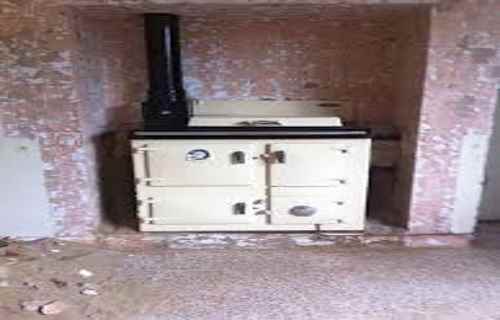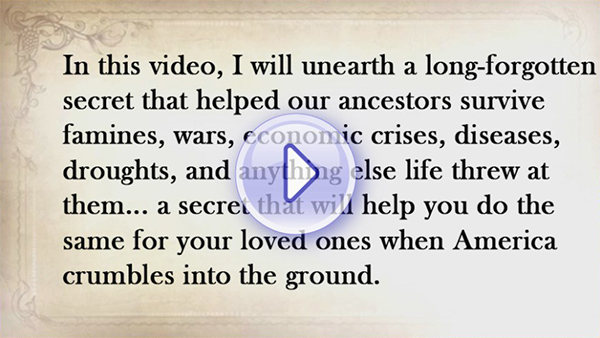Heat Distribution Within The Home: Dealing With The Future by Learning From The Past
Going through some old documents I found a few photographs of my late great-grandparents. They lived in Devon, in a chocolate box cottage, thatched roof and stable doors that was built some 700 years before I was born. There was no electricity, no domestic gas or running water, by modern standards it was rudimentary at best.
One thing it was though was always warm.
I know the three-foot thick wattle and daub walls helped, but there was no double glazing and the only heating was from a range, and a small one at that. Even upstairs was always nice and warm, even when the thick wooden doors that separated the stairwell from the living room were closed. Seeing the pictures brought the memories of the old place flooding back, and one of the strongest memories was about how warm the place was even in deepest winter.
A quick call to one of my elderly uncles provided the answer as to why, and I’m sure this may have applications for homes where the only heat is a single wood burning stove. As soon as he mentioned the grills in the living room ceiling I recalled the ones in the bedroom floors, which of course were the same ones as in the ceiling below, and everything fell into place.
The grills were made of metal and were about the size of a house brick about 9 x 4 inches. The ceilings at the cottage were simple affairs, the ceiling of the lower room was the floor of the upper room, there were no spaces between the floors to accommodate pipes and wiring as there are in most modern homes.
The grills quite simply allowed the heat to pass from downstairs to the upper rooms. If it got too hot upstairs you just opened a window. I asked my uncle if he had ever seen ice on the inside of the single glazed windows.
“Not once, I never saw ice inside windows until I got married and moved into a modern house” he said. “In really hot summers though grandfer (grandpa) would put brown paper over the grills to stop the heat moving up, they still had the range going for hot water and cooking so upstairs got too hot to sleep, the paper helped stop the heat going through”
The gaps between my current ceiling and the underside of the upstairs floor are around 10 inches. The space is full of wires and water pipes, but there are areas that are pipe and wire free. A simple box, without a top or bottom, placed above a lower room grill and below an upper room grill would allow heat transfer between two floors. As I have two fireplaces, under two different bedrooms this would be a way of moving heat around the house passively. The heat does its thing and rises and keeps the bedrooms above freezing point.
I think being able to move heat around the house effectively without the need for a boiler, furnace or fan would be a Godsend in a prolonged grid-down scenario.
As A Way To Introduce You To Skilled Survival, We’re Giving Away Our ‘Family First’ Food Planning Guide. Click Here To Get Your Copy.
A prolonged emergency or collapse the situation is stressful enough, everyone being cooped up in one room because it’s the only warm place would make it much more so.
For youngsters, in particular, being able to play and sleep in their rooms would help maintain a sense of normality and would make the situation far less stressful for them.
This simple age-old fix could make far more of the house useable in cold weather emergencies or collapse scenarios and even retro fitting wouldn’t be that much of a problem in many homes.
RELATED : 10 Reasons Why We Need An EarthShip Home
Are you worried about your future? Are you worried by the many disasters that you face in your everyday life? Worry no more. The Lost Ways comes in to solve your woes. This program was created by Davis Claude and its major role is to prepare and teach you how to handle worst-case scenarios using the least independence. This program will therefore motivate you to protect your family and friends during the worst period without the help of the modern technology.
Remember, calamities are everywhere: at work, home, school and many other places. These calamities cause tension and leads to a decrease in productivity. This may finally lead to a reduction in life. Fortunately, the lost ways review will provide solutions to these situations. It will give you the tips for preparing yourself when nothing seems to go as expected.
Generally, most people are optimistic. This makes them unprepared for failure. However, the best thing is to prepare for worst times. It is important to tell your kids about earthquakes, fire outbreaks, extreme weather conditions and other calamities. Tell them how to deal with these calamities in case they occur.
SOURCE : undergroundmedic.com
Other useful resources:
The Lost Ways (Learn the long forgotten secrets that helped our forefathers survive famines,wars,economic crisis and anything else life threw at them)
Survival MD (Best Post Collapse First Aid Survival Guide Ever)
Backyard Innovator (A Self Sustaining Source Of Fresh Meat,Vegetables And Clean Drinking Water)
Blackout USA (EMP survival and preparedness)
Conquering the coming collapse (Financial advice and preparedness )
Liberty Generator (Build and make your own energy source)
Backyard Liberty (Easy and cheap DIY Aquaponic system to grow your organic and living food bank)
Bullet Proof Home (A Prepper’s Guide in Safeguarding a Home )
Family Self Defense (Best Self Defense Strategies For You And Your Family)
Survive Any Crisis (Best Items To Hoard For A Long Term Crisis)
Survive The End Days (Biggest Cover Up Of Our President)
Drought USA (Discover The Amazing Device That Turns Air Into Water)


